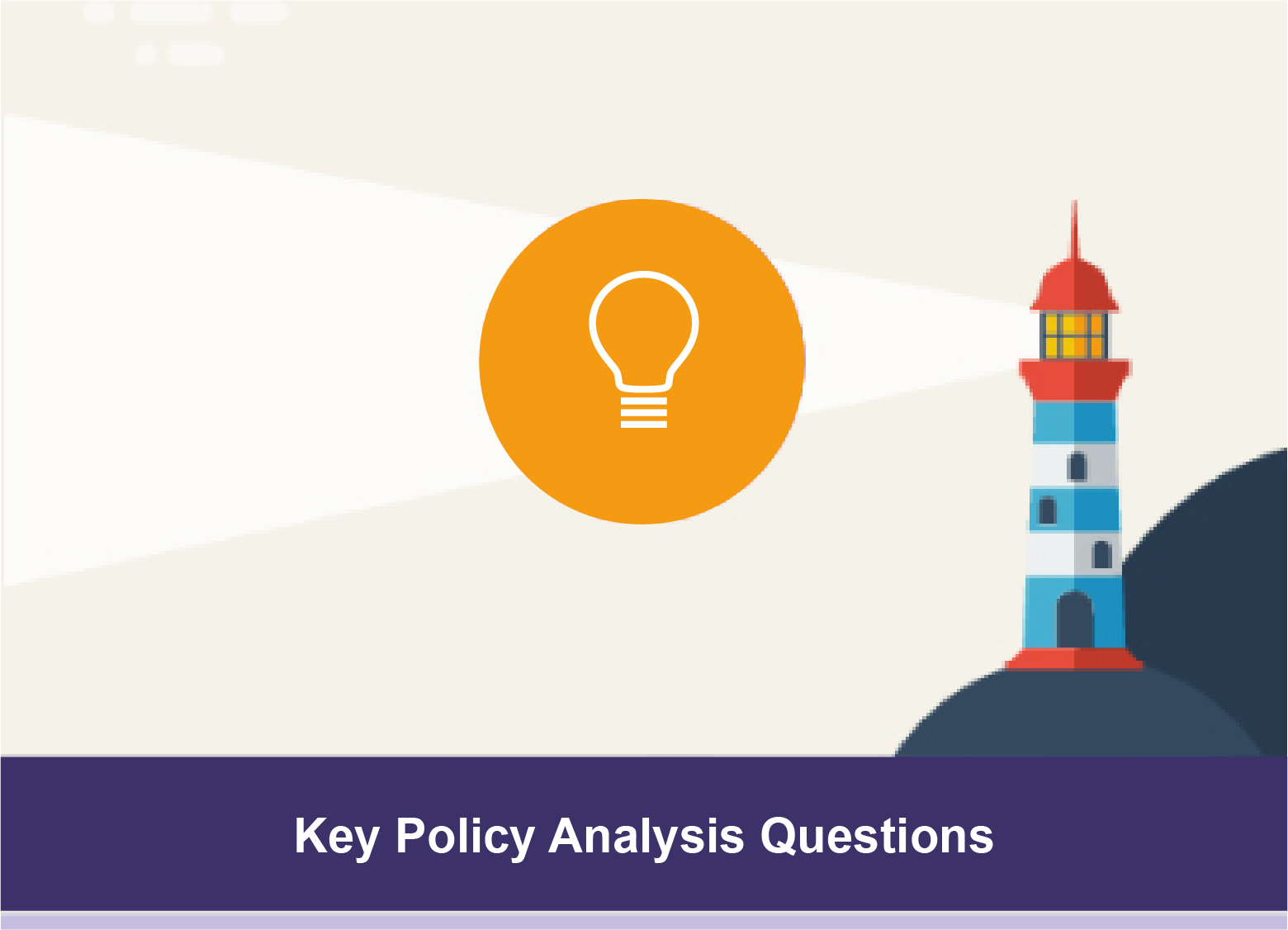What to know
Answer these key policy analysis questions to develop process and structure descriptions and to rate policy options.

Framing Questions
- What is the policy lever—is it legislative, administrative, regulatory, other?
- What level of government or institution will implement?
- How does the policy work/operate?
- Is it mandatory?
- Will enforcement be necessary?
- How is it funded?
- Who is responsible for administering the policy?
- Is it mandatory?
- What are the objectives of the policy?
- What is the legal landscape surrounding the policy (e.g., court rulings,
- constitutionality)?
- What is the historical context (e.g., has the policy been debated previously)?
- What are the experiences of other jurisdictions?
- What is the value-added of the policy?
- What are the expected short, intermediate, and long-term outcomes?
- What might be the unintended positive and negative consequences of the policy?
Public Health Impact
Potential for the policy to impact risk factors, quality of life, disparities, morbidity and mortality.
- How does the policy address the problem or issue (e.g., increase access, protect from exposure)?
- What are the magnitude, reach, and distribution of benefit and burden (including impact on risk factor, quality of life, morbidity and mortality)?
- What population(s) will benefit? How much? When?
- What population(s) will be negatively impacted? How much? When?
- What population(s) will benefit? How much? When?
- Will the policy impact health disparities / health equity? How?
- Are there gaps in the data/evidence-base?
Feasibility
Likelihood that the policy can be successfully adopted and implemented.
Political
- What are the current political forces, including political history, environment, and policy debate?
- Who are the stakeholders, including supporters and opponents? What are their interests and values?
- What are the potential social, educational, and cultural perspectives associated with the policy option (e.g., lack of knowledge, fear of change, force of habit)?
- What are the potential impacts of the policy on other sectors and high priority issues (e.g., sustainability, economic impact)?
Operational
- What are the resource, capacity, and technical needs developing, enacting, and implementing the policy?
- How much time is needed for the policy to be enacted, implemented, and enforced?
- How scalable, flexible, and transferable is the policy?
Keep in mind
In assessing feasibility, it is important to identify critical barriers that will prevent the policy from being developed or adopted at the current time. For such policies, it may not be worthwhile to spend much time analyzing other factors (e.g., budget and economic impact). However, by identifying these critical barriers, you can be more readily able to identify when they shift and how to act quickly when there is a window of opportunity.
Economic and budgetary impacts
Comparison of the costs to enact, implement, and enforce the policy with the value of the benefits.
Budget
- What are the costs and benefits associated with the policy, from a budgetary perspective?
- For public (federal, state, local) and private entities to enact, implement, and enforce the policy?
- For public (federal, state, local) and private entities to enact, implement, and enforce the policy?
Economic
- How do costs compare to benefits (e.g., cost-savings, costs averted, ROI, cost-effectiveness, cost-benefit analysis, etc.)?
- How are costs and benefits distributed (e.g., for individuals, businesses, government)?
- What is the timeline for costs and benefits?
- How are costs and benefits distributed (e.g., for individuals, businesses, government)?
- Where are there gaps in the data/evidence-base?
